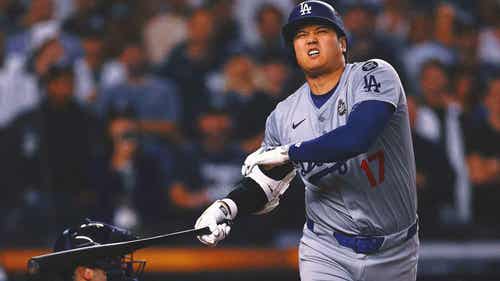
New York Mets: What Can They Expect From David Wright in 2017?
After two consecutive injury-shortened seasons, can David Wright help the New York Mets in 2017?
David Wright came up from the minor leagues in late July of 2004 and had a great debut season for a disappointing Mets team that went 71-91. Over the next four seasons, Wright was one of the best players in baseball. He was a three time all-star, won two Gold Gloves, and finished in the top 10 in MVP voting three times. He hit for average, hit for power, stole bases, and played a strong defense at third base; a real all-around player.
From 2005 to 2008, Wright was fifth in all of baseball in Wins Above Replacement (WAR, per FanGraphs). This was a good stretch of seasons for the Mets. They averaged 89 wins per year. They only made the playoffs once, in 2006, when they took the St. Louis Cardinals to Game 7 of the NLCS before their season ended on a Carlos Beltran strikeout, but they were regularly in contention. Wright was the face of the franchise.
The Mets moved to Citi Field in 2009 and Wright had a bizarre season. After averaging 29 home runs and 112 RBI per year from 2005 to 2008, along with a .534 slugging percentage, Wright had a major power outage. He hit just 10 home runs, had 72 RBI, and slugged .447. He also graded out poorly on defense after being a plus defender the previous two years.
For a player who had been so consistent, it was a strange year for a 26-year-old to have. The ballpark may have played a role. Statistically, Wright was only slightly better on the road than at home, but the tougher home park may have affected Wright mentally and caused him to change his swing, which resulted in a drop in power. Meanwhile, though it can’t be blamed on David Wright, the Mets dropped from 89 wins in 2008 to 70 wins in 2009.
The 2009 season was the first of six seasons in which the Mets finished under .500. They averaged 75.5 wins per year and finished in fourth place in a five-team division four of these six years. Wright bounced back from his 10-homer year to hit 29 home runs in 2010, but hasn’t approached that number since.
In 2011, David Wright suffered a stress fracture in his back that limited him to 102 games. In the games he did play, his power was down. He slugged .427, the lowest slugging percentage of his career. He bounced back in 2012 to have the second-best season of his career, according to FanGraphs WAR (7.4 WAR). He was good again in 2013, hitting .307/.390/.514. It was a batting line that wouldn’t look out of place in his best stretch of play back in 2005-2008, but it came in only 112 games because of a hamstring injury.
More from Call to the Pen
That 2013 season was the last in which David Wright was an elite player. A shoulder injury hampered him in 2014 and he had his worst season at the plate. He did his best to play through the pain, so he was able to play in 134 games, but he hit just .269/.324/.374.
Wright started the year back at third base for the Mets in 2015 but made it just eight games before being shut down with a hamstring strain in mid-April. In May, he developed back pain and was diagnosed with spinal stenosis, which is a narrowing of the spinal column that causes “numbness, weakness, cramping, or pain in your arms or legs.” Wright got back on the field in late August. He ended up playing 38 games and hitting .289/.379/.434.
At the end of that 2015 season, the Mets made the post-season for the first time since 2006. Wright was 1 for 16 in the five game series win against the Dodgers in the NLDS, then hit well in the four-game sweep of the Cubs in the NLCS. Against the Kansas City Royals in the World Series, Wright hit .208/.240/.333. It was nice to see the longtime veteran on the field for the Mets as they tried to win their first World Series since 1986, but disappointing to see him struggle with his health.
Wright was back out there at the beginning of last season. This time, he almost made it to the end of May before going on the DL. He had fusion surgery to fix a herniated disk and missed the rest of the season. As different parts of his body continued to fail him, he was reminiscent of the Black Knight from Monty Python and the Holy Grail.
Despite all of the assorted injuries he’s had over the years, Wright said last summer that he expected to return “as good as new” from the neck surgery, although he may lose some range of motion in his neck and his back problem is likely to be an issue for the remainder of his career. Speaking of his future on the field, Wright said, “I’ve proven, at least to myself mentally, that yeah, you can dive around, you can take swings, and it is what it is. It’s not going to get better, but hopefully it doesn’t get much worse. I feel like I can be myself at the point where I know I’m going to have the back pain, regardless.” Like the Black Knight, Wright is an optimistic fellow.
After 1,583 major league games and injuries to multiple parts of his body, it’s hard to know what to expect from David Wright in 2017. He’ll be 34 years old and has played a total of 75 regular season games the last two years. Over the last four years, he’s averaged 80 games per season. He says, “I plan on coming back and being the player that I feel like I’m capable of being.” It’s just a flesh wound.
According to Mets GM Sandy Alderson, Wright has begun simulating baseball activities. Simulating baseball activities means he is making baseball moves, but not yet on the field. He is expected to be cleared for full baseball activities in January. Alderson said the team hopes Wright can play four out of every five games, which would mean about 130 games. Some of those appearances would be pinch-hitting appearances, so an estimate for plate appearances would be in the 425 to 475 range.
Based on available projections, the Mets are being very optimistic to expect Wright to play four out of every five games. The Depth Chart projections at FanGraphs have him playing 64 games and hitting .252/.331/.402 in 238 at-bats. He’s projected for 0.9 WAR. A simple Marcels projection using a weighted average of Wright’s last three seasons and adjustments for age and regression to the mean has Wright getting 266 at-bats and hitting .259/.334/.398. RotoChamps has him projected for 287 at-bats and a .261/.340/.411 batting line.
Even the projections of 240 to 290 at-bats may be optimistic considering what Wright has gone through the last couple years. The Mets will hope for the best, but there’s little chance Wright will be worth the remaining $67 million on a contract that takes him through the 2020 season. Wright signed an 8-year, $138 million contract after his very good 2012 season (7.4 WAR, second-best of his career). Since then, he’s been paid $71 million and been worth 9.1 WAR, with 6 WAR coming in the 2013 season.
If Wright is again limited in 2017, the Mets have Jose Reyes and Wilmer Flores as options at third base. Both hit about as well as Wright last year. For 2017, the 25-year-old Flores (101 wRC+) is projected to be about as good as Wright (101 wRC+) at the plate, but Reyes is projected to be considerably worse (86 wRC+). [The metric wRC+ takes the things a hitter does and adjusts them for league and ballpark and sets them to a scale where 100 is league average. A 101 wRC+ means Wright and Flores are projected to be 1% better than the average hitter. Reyes is projected to be 14% worse than league average.]
After all he’s been through, the David Wright Mets fans see from this point forward could still be an above-average hitter who plays three or four times a week. That’s probably an optimistic view. He won’t be the guy who played 150 games per year and hit 25-30 homers like he did 10 years ago, but he could still help the team.










